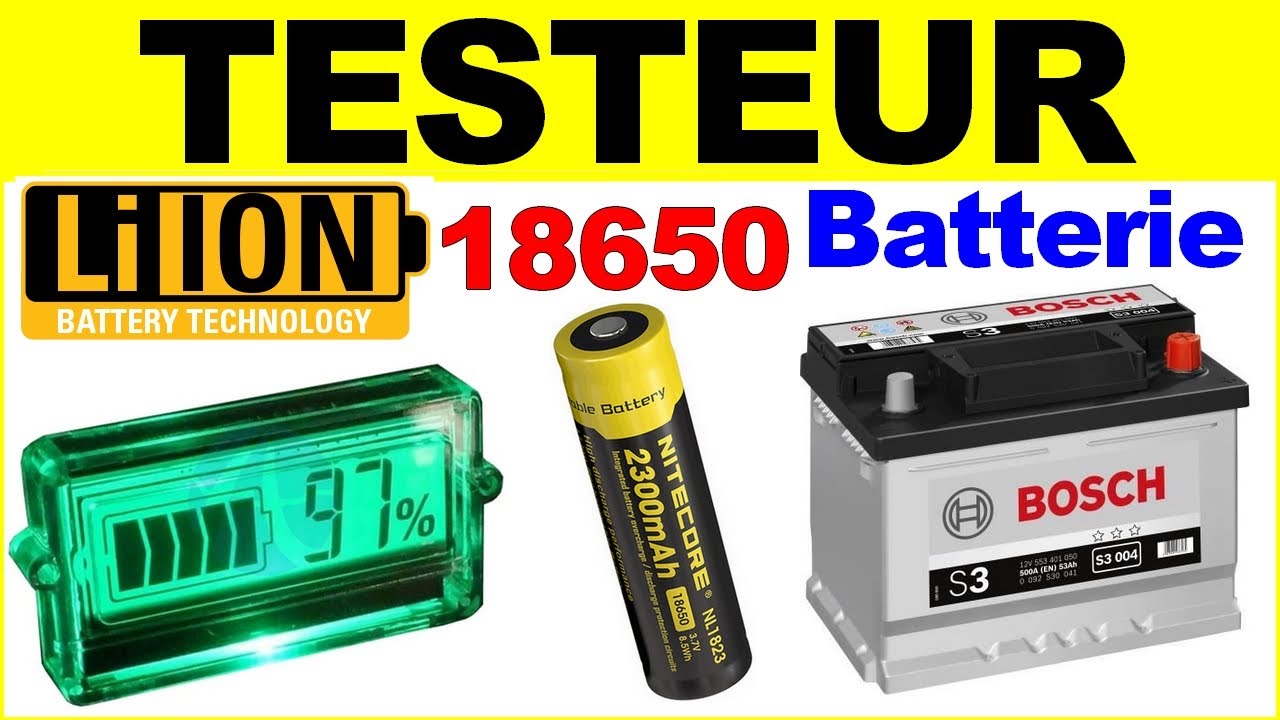how to make a battery level indicator, battery charger
Presentation of the simulation of the Protéus diagram and the flowcode program around a PIC12F675 in order to visualize a Lithium ion battery charge.
Rated voltage 3V6. End of charge voltage 4V2.
The world is moving away from fossil fuels and will one day become fully electric. In today's world, lithium-ion is the most promising battery chemistry of all. Most batteries used in laptops, RC toys, drones, medical devices, power tools, electric bicycles and electric cars (EV) are based on 18650. It is one of the Li -ion available, is produced in high volume and enjoys a low cost per Wh.
18650 battery (diameter 18mm and length 65mm) is a size classification of lithium-ion batteries, it has the same shape, but a little larger than an AA battery. AA batteries in comparison are sometimes referred to as 14500 batteries, as they have a diameter of 14mm and a height of 50mm.
Earlier I made a solar power generator which works really well so far. But the main problem is its weight, it is really heavy. The main weight of the solar generator is due to the heavy lead-acid battery inside. interior.So I decided to make a lightweight and compact 18650 Li Ion Battery Pack.
In this Instructable I will show you how to make a 18650 battery pack for applications like: Power Bank, Solar Generator, e-Bike, Power wall etc. The principle is very simple, just combine the number of 18650 cells in series and parallel to make a bigger pack and finally provide security by adding a BMS to it.
At the end of this project, I made a custom 3D printed case for the battery.
You have two options to connect 18650 cells together: 1. Solder 2. Spot solder
The best choice is always spot welding, but spot welding is much more expensive than a good quality soldering iron.
You need to know why spot welding is preferred over welding, the problem with welding is that you apply a lot of heat to the cell and it doesn't dissipate very quickly. This enhances the chemical reaction in the cell which damages the performance of the GG cell. Ultimately, you will lose cell capacity and life.
But if you're not interested in buying an expensive spot welder, you can weld the nickel tabs to the cell by following a few precautions and tips:
1. To minimize the contact time of your soldering iron on the cell, make sure the surface is sufficiently scuffed and that you use plenty of flux to allow for fast solder flow.
2. It's best to have a good quality high wattage (min 80W) iron with good heat capacity so it can deliver the heat to the joint quickly so you don't have to hold the iron to the battery for ages and let the heat seep in and damage the battery.
En savoir plus sur battery
how to make a battery level indicator, battery charger
Presentation of the simulation of the Protéus diagram and the flowcode program around a PIC12F675 in order to visualize a Lithium ion battery charge.
Rated voltage 3V6. End of charge voltage 4V2.
The world is moving away from fossil fuels and will one day become fully electric. In today's world, lithium-ion is the most promising battery chemistry of all. Most batteries used in laptops, RC toys, drones, medical devices, power tools, electric bicycles and electric cars (EV) are based on 18650. It is one of the Li -ion available, is produced in high volume and enjoys a low cost per Wh.
18650 battery (diameter 18mm and length 65mm) is a size classification of lithium-ion batteries, it has the same shape, but a little larger than an AA battery. AA batteries in comparison are sometimes referred to as 14500 batteries, as they have a diameter of 14mm and a height of 50mm.
Earlier I made a solar power generator which works really well so far. But the main problem is its weight, it is really heavy. The main weight of the solar generator is due to the heavy lead-acid battery inside. interior.So I decided to make a lightweight and compact 18650 Li Ion Battery Pack.
In this Instructable I will show you how to make a 18650 battery pack for applications like: Power Bank, Solar Generator, e-Bike, Power wall etc. The principle is very simple, just combine the number of 18650 cells in series and parallel to make a bigger pack and finally provide security by adding a BMS to it.
At the end of this project, I made a custom 3D printed case for the battery.
You have two options to connect 18650 cells together: 1. Solder 2. Spot solder
The best choice is always spot welding, but spot welding is much more expensive than a good quality soldering iron.
You need to know why spot welding is preferred over welding, the problem with welding is that you apply a lot of heat to the cell and it doesn't dissipate very quickly. This enhances the chemical reaction in the cell which damages the performance of the GG cell. Ultimately, you will lose cell capacity and life.
But if you're not interested in buying an expensive spot welder, you can weld the nickel tabs to the cell by following a few precautions and tips:
1. To minimize the contact time of your soldering iron on the cell, make sure the surface is sufficiently scuffed and that you use plenty of flux to allow for fast solder flow.
2. It's best to have a good quality high wattage (min 80W) iron with good heat capacity so it can deliver the heat to the joint quickly so you don't have to hold the iron to the battery for ages and let the heat seep in and damage the battery.
En savoir plus sur battery
























No comments:
Post a Comment